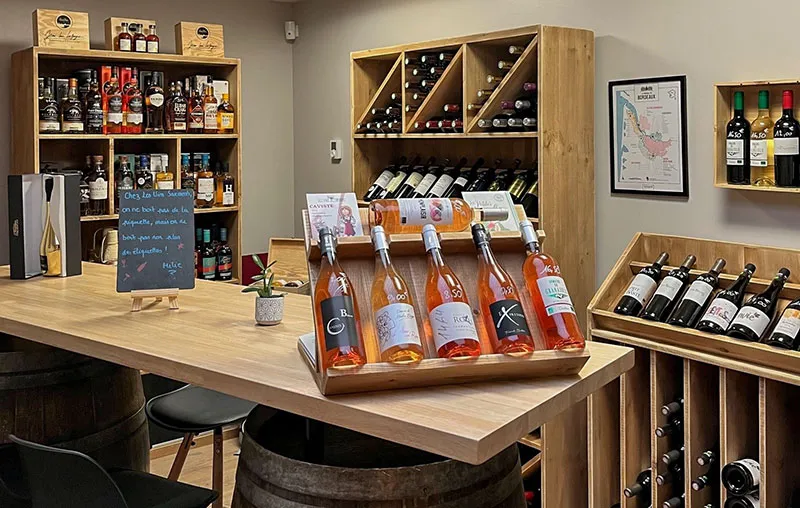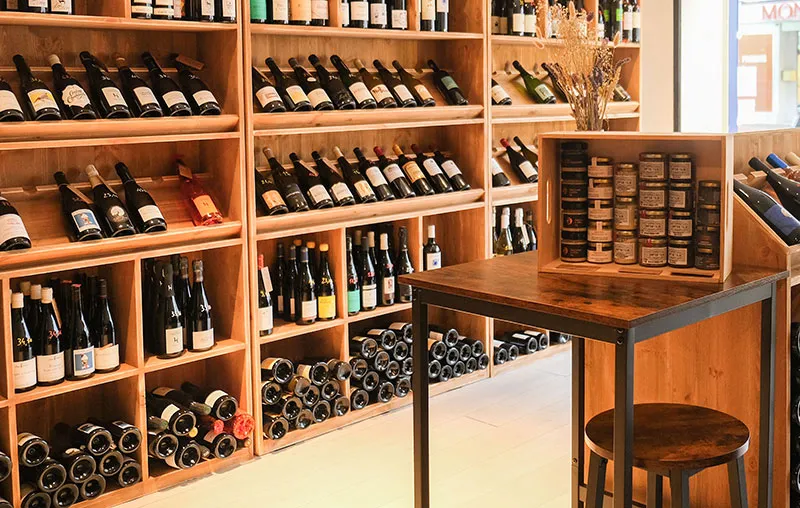-
MenuBack
-
Products
-
-
-
By profession
-
-
-
By profession
-
-
-
-
-
By product category
-
-
-
By profession
-
-
-
-
-
By product category
-
-
-
-
-
-
By product category
-
-
-
By profession
-
-
-
Business
-
- Destocking
- Second-hand
-
Customer projects
-
-
My layout project
-
Published on : 02/08/2023
How to set up a tasting area?
Why should you have a tasting room in your shop?
There are several reasons why it is worthwhile to have a tasting area in your wine cellar or delicatessen.
First of all, a tasting area improves the experience of your customers and helps to build loyalty. Indeed, it allows customers to discover a selection of your products in an informal and interactive way. This can encourage them to buy new items that they might not otherwise have known about. They can learn more about your offer by tasting them, which can help them understand the specifics and make informed choices about their future purchases. The experience of tasting can become a pleasant memory for your customers, which can encourage them to return to your business to buy more products, and especially to recommend you to their friends. By organizing regular events, you can build a closer relationship with your customers by creating a climate of trust, while differentiating yourself from your competitors. With a tasting area, you can observe their reactions as they enjoy your selection, so you can better understand their preferences and adjust your assortment accordingly.
A dedicated tasting area is a great way to boost sales. Indeed, it is by discovering a product through the taste buds that your buyers will be more inclined to buy it. They will have a better understanding of the characteristics of the product being tested and their flavors. Tastings are generally used to promote certain types of items such as your new products, the products you sell the most, or those you like to market. You will create demand for products that your customers would not have thought to look for or buy.
Finally, it will help to accentuate your shop's brand. As we explained earlier, this type of event enhances your customers' experience in the shop. You will strengthen your relationship with your customers and improve their perception of your brand. By carefully selecting and attractively displaying your tasting goods, you can demonstrate your commitment to quality and your passion for the products you sell in your wine or delicatessen.

How to design a tasting area?
First of all, lighting is an important element for a tasting area, as it can influence the atmosphere and the customer experience. Soft, subdued lighting is recommended to create a pleasant and welcoming atmosphere, while allowing customers to see the suggested products clearly. Here are some factors to consider when choosing the configuration:
- Highlight the merchandise offered by using spotlights or accent lighting on the tables or counters.
- Make sure the tasting area is well-lit overall, so that customers feel comfortable and safe.
- Use lighting controls to adjust the intensity and temperature of the light as needed.
Next, arrange the furniture to suit a tasting area! Let's start with the selection of high tables and bar stools. There are several possibilities for arranging your area. You can decide on a rectangular high table where your testers can stand around, a wine bar that will give your location a touch of class, or a tasting table. In any case, you can arrange your items to be enjoyed. Next, choose professionnal stools with comfortable seating so that your customers can relax while enjoying their experience. To complement this furniture, use display stands to showcase the products you wish to have tasted, such as a wine bottle display. This is a practical accessory that will enhance your selection. You can also fine-tune your business layout by adding a counter or a console to store all the accessories needed for a tasting: boards, corkscrews, cutlery, dishes, stemware, etc.

The perfect products for a successful tasting
Depending on the type of business you have, you have the opportunity to present several types of products. For wine shops, wine tastings are of course the most common. If your wine cellar has a range of beers and spirits, you can also present these products to wine lovers. Cheese tastings are popular in delicatessens and allow cheese lovers to taste different cheeses such as hard, soft and bloomy. Chocolate is also invited to these events for those with a sweet tooth. This non-exhaustive list presents the most frequently tested products. However, you can also have the participants try other items, such as local and regional products available in your delicatessen.
Secondly, for a successful product range, you should focus on the quality of the products. Give preference to local or regional recipes, and if possible seasonal ones, as they are tastier. Certified products can also be a guarantee of quality. These may be organic, PDO (Protected Designation of Origin), or Label Rouge for example. Consider trying them before selecting them for your customers, as this will help you to know whether they are of interest to you and your business.
Presentation also plays an important role in making people want to taste. If you are going to have a wine tasting, remember to leave enough space so that your participants can easily browse the shelves and examine the bottles. Make sure that the labeling is clear so that customers can effortlessly identify and learn more about them (provenance, flavors, etc.). Products should be arranged in a way that makes them easy to taste. This may mean arranging them by type or by order of tasting, for example. The staging of your selection is also important. This can include accessories such as cheese boards, glasses, or glass holders, which will add a special touch to the experience. Finally, a demonstration can be organized to help customers understand how to enjoy the products.
